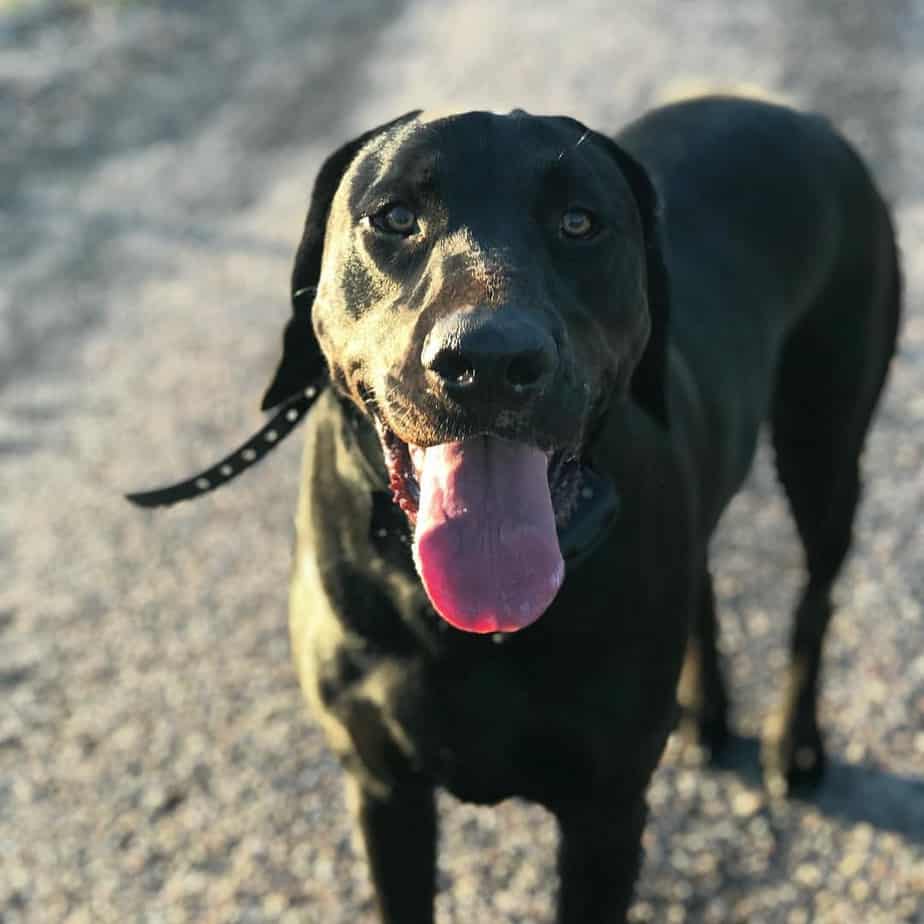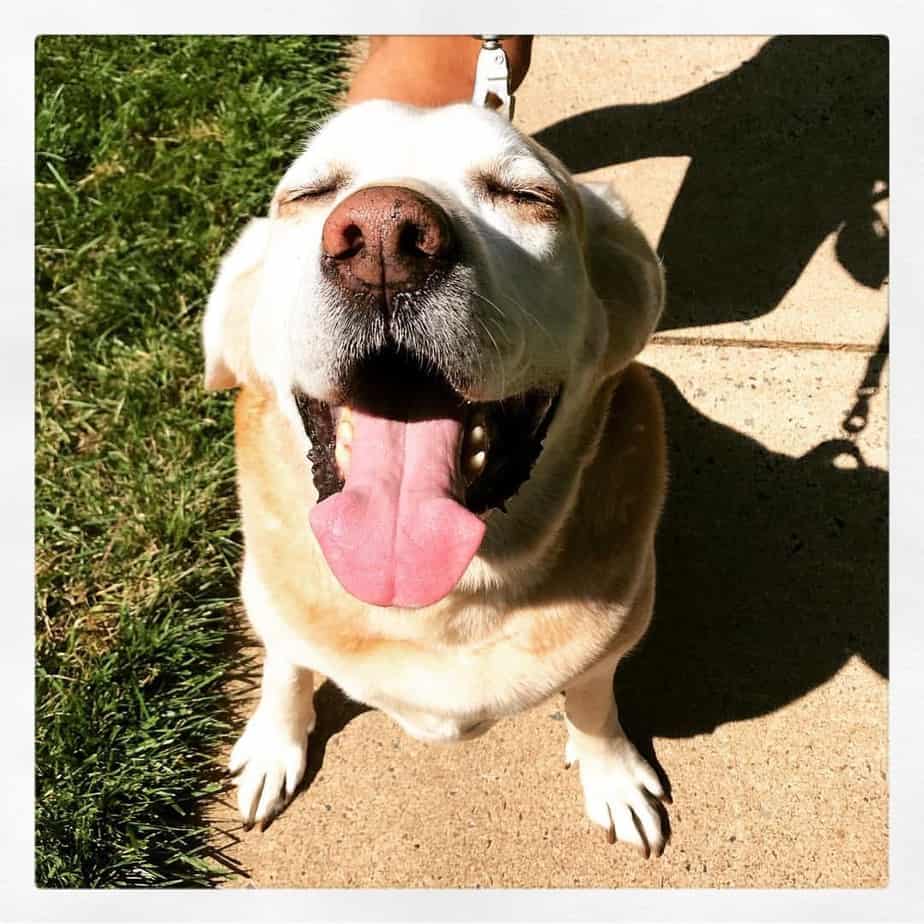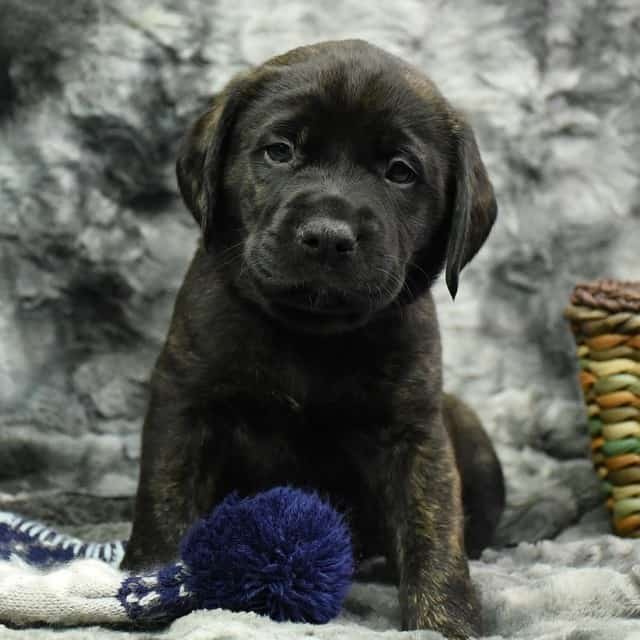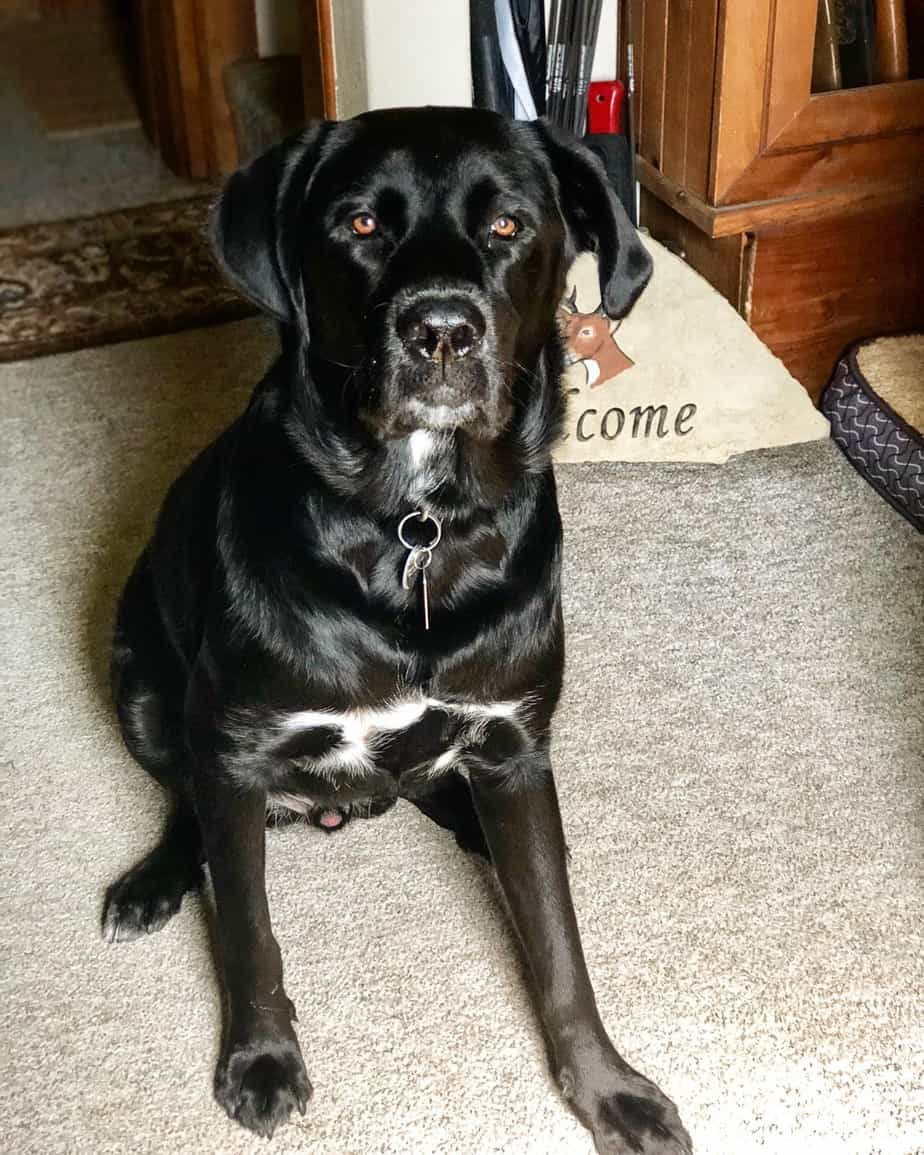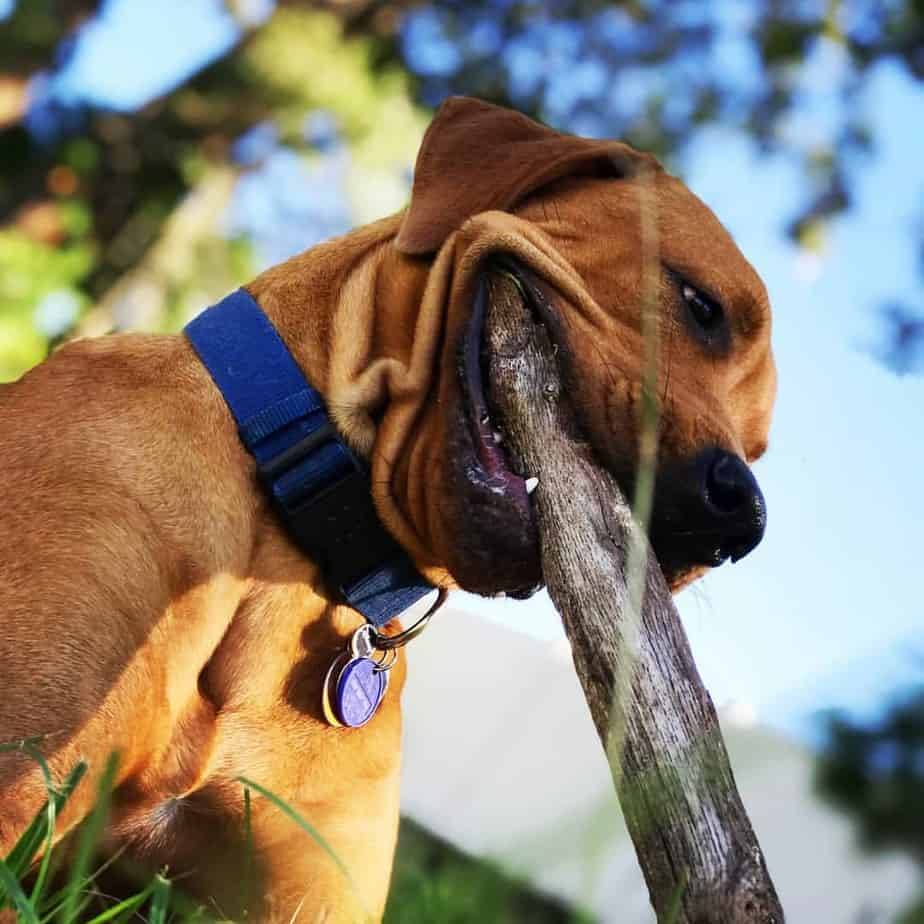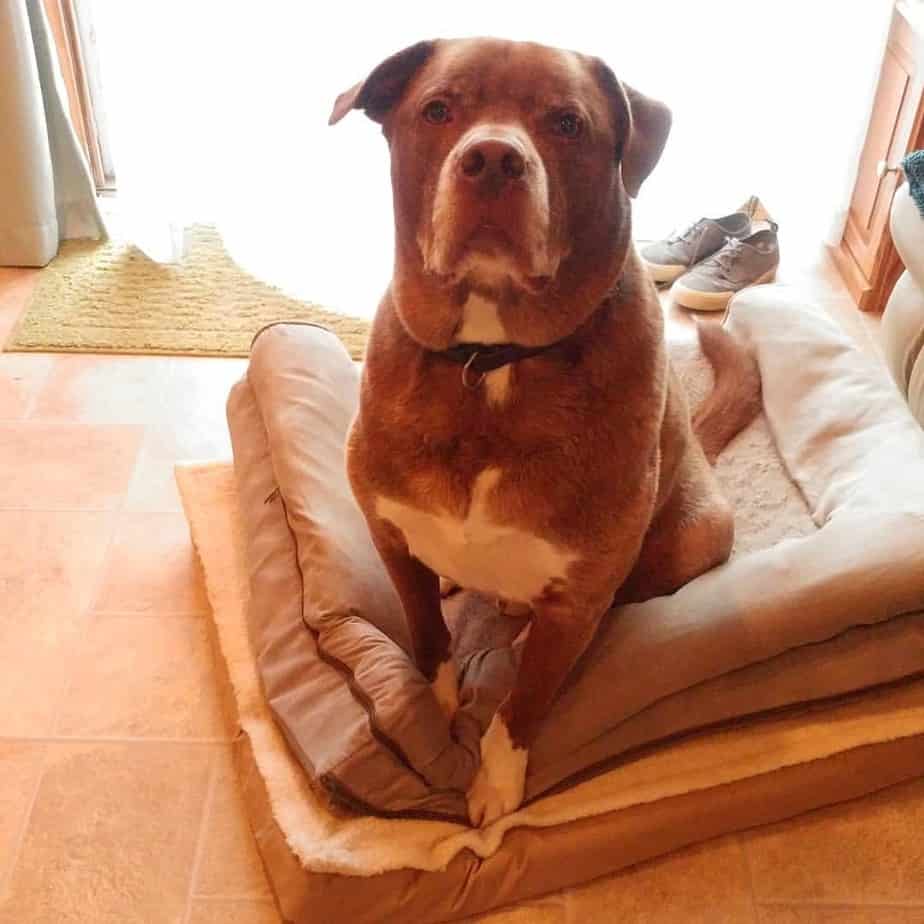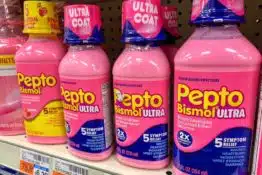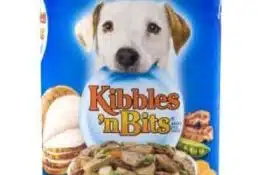
Mastiff Lab Mix Facts
The Lab Mastiff Mix is a giant hybrid that results from combining a Labrador Retriever and an English Mastiff. Like most other breeds, its exact origin is not well-defined. It is unclear whether the mixed breed was intentionally combined together or if the original Lab Mastiff Mix was made by accident. However, it’s widely believed that this crossbreed has originated in the United States.
Meet the parents! The Labrador Retriever has its roots in Newfoundland, now a part of Canada. Fishermen preferred this breed as they would provide great help in tugging nets and towing carts filled with fish. The original Labradors were smaller than the ones we have today. They were bred with larger hunting dogs which gave birth to the modern day Labs.
The other parent, the English Mastiff, has an extensive history. They were believed to exist as early as the sixth century BC where they were used as war dogs and patrols. It was in the 18th century when dog fighting was ceased that resulted in their drastic transformation from being fighters to companions.
Combining these two you get a hybrid having which is as affectionate and brave as the Mastiff and as active and outgoing like the Labrador.
3 Reasons Why You Shouldn’t Get a Lab Mastiff Mixed-breed
- This mixed breed needs to be trained head-on.
These gigantic hybrids can grow up unaware of their strength. They can unintentionally injure someone by jumping on them in a greeting or by pulling on the lease. Training and socializing them as soon as they get home is a must.
- This mixed breed needs an extra budget for food.
Since it is a large and active dog, this hybrid requires around 3.5 cups of food each day to fuel its energy. You must be ready to spend extra bucks on providing the Lab Mastiff Mixed-breed with high-quality to maintain its sound health and to feed its energy.
The One Thing Pet Owners Regret Not Doing Until It’s Too Late
Is your pet safe?
1 in 3 pets will need emergency veterinary treatment each year and it is estimated a pet receives emergency care every 2.5 seconds in the U.S.
The average cost of treating a broken bone in dogs is $2,700. Cancer treatments? Up to $10,000.
It’s why so many pet owners say their biggest regret isn’t the vet bill—it’s not having pet insurance when they needed it most.
Ask yourself: “If an unexpected $5,000 vet bill hit tomorrow, could I afford it?”
If the answer is no, it’s time to get covered.
Take a look at Lemonade. They have a great app that actually works, they have an instant chatbot that is faster and, dare we say it, friendlier than most companies’ “real” customer service and a quick scroll through Reddit will uncover… people are really vibing with this brand.
So go check them out and take a look. It takes less than a minute.
- They need space.
If you are living inside an apartment, then this mixed breed is not for you. The Mastiff Lab mix needs ample to live and move around comfortably. You should only consider getting this hybrid if you have a relatively large backyard. Make sure that it’s also securely and adequately fenced. They are excellent jumpers and can escape in a breeze!
Best Dog Food for Mastiff Lab Mix
| Image | Product | Features | Price |
|---|---|---|---|
 | Purina Pro Plan Sensitive Skin and Stomach Dog Food Salmon and Rice Formula - 30 lb. Bag
| 9.7 | Buy on AmazonBuy on Chewy |
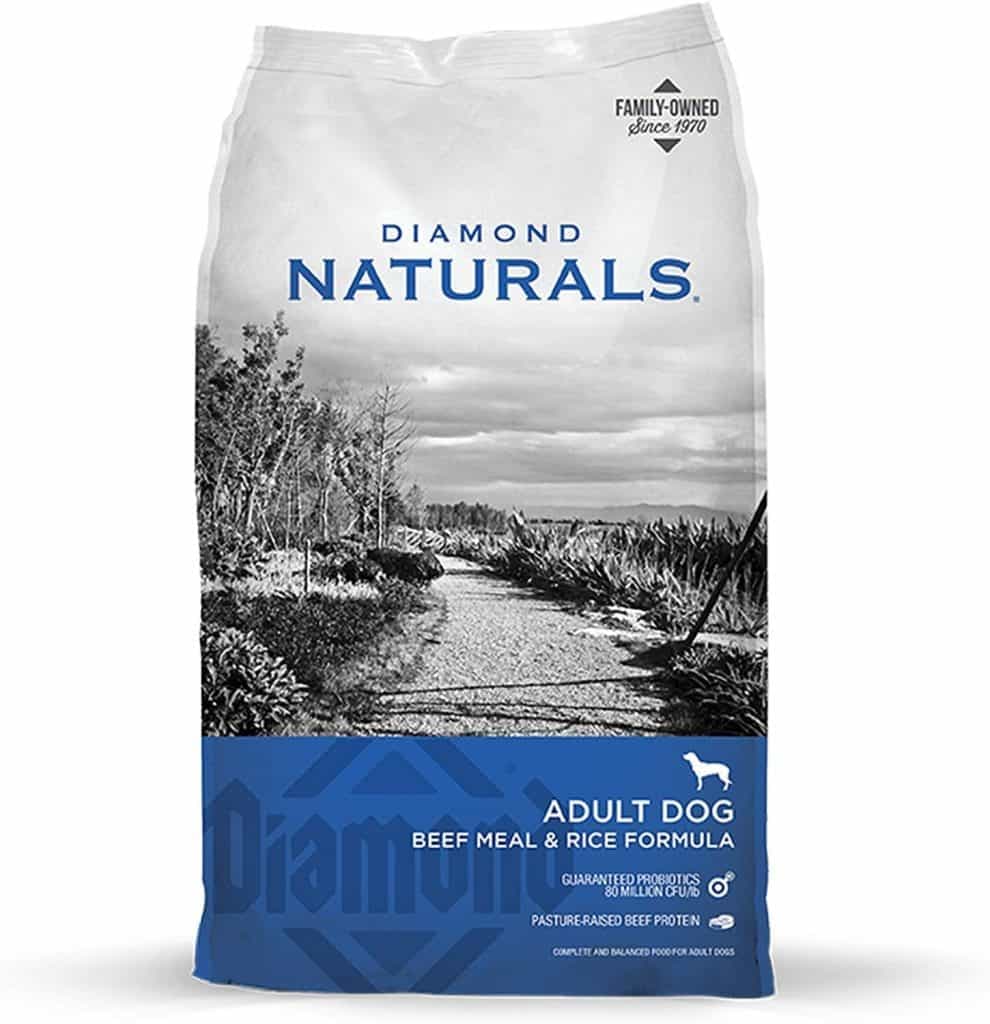 | Diamond Naturals Dry Food for Adult Dog, Beef and Rice Formula, 40 Pound Bag (074198608331)
| 9.6 | Buy on AmazonBuy on Chewy |
3 Reasons Why You Should Get a Mastiff Lab Mixed-breed
- This mixed breed can make good watchdogs.
You can bet on this mixed breed if you are looking for a watchdog and guard dog. They bark in a very loud, clear and deep voice that will surely alert you of any stranger or possible harm lurking around. The hybrid has a spunky personality and known for its willingness to do anything to protect their owners out of danger’s reach.
- This mixed breed tends to go well with kids.
If socialized properly at a young age, this mixed breed can get along with your kids well. They have playful instincts and friendly personalities that can quickly match kids’ who likes to run around and play modest games.
- The mixed breed’s size tells otherwise.
Don’t let their big size intimidate you. This hybrid Mastiff bloodline makes it inherit its classic “gentle giant” personality. With proper training, they quickly become well-behaved and peaceful and will only step in if harm threatens.
Appearance, Personality, and Traits of a Labrador mixed with Mastiff
| Weight | 100-200 pounds |
| Height | 25-36 inches |
| Size | Large |
| Coat Type | Short |
| Coat Color | Mixed Colors |
| Amount of Shedding | Little |
| Eyes | Black or Hazel |
| Nose | Black or Brown |
| Temperament | Courageous, Loyal, Affectionate, Active |
| Life Expectancy | 10-15 years |
| Hypoallergenic | No |
| Kids Friendly | Yes |
| New Owners Friendly | No |
| Breed Recognition | ACHC, DRA, IDCR, DBR |
The Lab mixed with Mastiff has an athletic build with profound structure and long legs. They can weigh anywhere from 100 to 200 pounds and can be as 25 to 36 inch tall. Those hybrids where the dominant gene comes from the Labrador Retriever tend to be taller while those whose most genes came from the Labrador Retriever tend to be bulkier and more massive. They can easily outweigh an average person once they have fully grown.
Their eyes are almond-shaped which color may vary from hazel to black. Their ears are triangular-shaped which are usually adapted from their Labrador Retriever bloodline.
This hybrid comes in six various colors: red, fawn, brindle/fawn, brindle/red, fawn/red, and brindle/fawn/red. The mixed breed usually features a black face musk due to the Mastiff genes. Its nose color can either be black or brown.
When it comes to their personality, the Lab mixed with Mastiff is very affectionate. Their human-friendly temperament and calm nature make them a good fit for most families. They love children, but their size might not suit ‘super’ young ones as they can easily harm without any intention to do so. You must socialize them early with kids and teach them how to play around with them safely.
The same thing goes with other household pets or animals you want this dog to be with. Early socialization is imperative.
This hybrid won’t disappoint you if you want a watchdog for your family. They have a great sense of smell and have a deep, startling bark that can scare an intruder.
The Lab mixed with Mastiff is known to be a ruthless protector for their owners and will do anything to save them from harm. Don’t confuse this with aggression though. They will only take action if they sense that real danger is lurking around. Once they know that their families are safe, they will be relaxed and calm.
They are outgoing and love to participate in family activities. While they can withstand being left alone relatively longer than other breeds, it is still not advisable to keep them by themselves far too long as to avoid boredom and separation anxiety. A bored Lab mixed with Mastiff can display destructive behavior.
Mastiff mixed with Lab Puppies For Sale
A Mastiff mixed with Lab puppy usually costs around $800 and $2000. The price will vary based on the location, age, and health of the puppy, breeder’s reputation and the demand for the mixed breed at that time.
Kindly research first before purchase to ensure the breeder’s credibility. A good breeder will always take care of the dog’s interest first over profit. A good sign that you are dealing with a responsible breeder is when he automatically gives you proofs of the health status of the pups and its parents. They will usually give you a heads up if the puppy has inherited any genetic disease from the parents.
A credible breeder will also ask for several questions such as what exactly you are looking for, house space, and area, budget and lifestyle to see to it that you can manage taking care of the dog. When he seems to do everything in a hurry, then, you may consider finding another breeder.
It t is best to visit personally meet the breeder. Through this, you can check if the puppies are healthy and happy if they come from parents in good condition. You will also have the opportunity to ask further questions to the breeder to measure if you are fit and capable of taking care of this particular type of dog.
Remember, don’t purchase from dog farms or mills. Dogs are inhumanely bred in these areas for the sake of money. Animal organizations also don’t suggest purchase dogs online as you’ll never know where they came from. It is great to personally meet your furry friend first before buying him or her.
Remember, the best choice is still getting a get a cross-breed pup at a rescue or animal shelter. The fulfillment you’ll get knowing that you have saved the life of a homeless dog is invaluable. It would surely make him feel great once you let him a part of your family.
Here are some recommended sites that you may check for available Lab mixed with Mastiff dogs or pups:
- AdoptAPet.com
- Petfinder.com
- GreenfieldPuppies.com
- ShopForYourCause.com
- NextDayPets.com
- PuppyFind.com
Grooming Your Lab crossed with Mastiff
One of the advantages of this mixed breed is that it doesn’t require heavy grooming. The Lab crossed with Mastiff has a natural smooth coat that is low maintenance and will only need moderate brushing. Brushing helps spread natural oil to their coat and removes loose hairs to promote new hair growth. However, they are not hypoallergenic which is why vacuuming your home once in a while is a must.
Bathing them can also be challenging due to their large size. Imagine, having to wash a 100 to a 200-pound dog! This task wouldn’t be easy and may consume much of your time. The shower should be done in your backyard using a water hose.
If possible, you may take them to a professional groomer instead that has a designated facility for bathing larger breeds. If not, don’t worry. Their oily skin coat makes it easier for them to remove dirt and water. You may take your dog out for a swim instead or splash in the water. More often, it’s enough to keep his coat fresh and clean. Ideally, a monthly bath is good enough for this hybrid.
Make sure to clean their ears regularly to avoid infections. They love playing in the water, and their long droopy ears make them more vulnerable to wax build-up and infections in the auditory canal. Their ears must be checked and cleaned through at regular times to avoid major issues.
Brush their teeth at least twice per week to improve oral hygiene. Due to their active personality, their paws should also be cleaned regularly. Their nails must be trimmed if needed.
Mastiff crossed with Lab Health Problems
The Mastiff crossed with Lab has a typical lifespan from 10 to 15 years. Generally, this hybrid is vulnerable to ear infections due to their ear structure. Gum infections may also kick in and can also impact their oral health. Both of these can be prevented by regular cleaning.
Remember that all breeds are prone to developing more severe and specific health problems. With a hybrid, it’s harder to expect which diseases may come in from the parents’ bloodline.
If you’re a potential owner of the Mastiff crossed with Lab, here’s a list of the following diseases that affect both parent breeds you should be aware of:
- Hip Dysplasia: This disease commonly affects the larger breeds. It happens when the ball and socket on the dog’s hip do not grow correctly. Thus, results in the rubbing of the joint and prevents it from sliding naturally. Deterioration occurs through which may lead to the total loss of the joint’s function.
- Progressive Retinal Atrophy: This is an eye disease that happens when the retina malfunctions and fails to reflect, absorb, and perceive light which can, later on, cause blindness.
- Gastric Dilatation and Volvulus (Bloating): This is a life-threatening condition that affects large dogs. This disease happens when a dog’s stomach gets filled with food, fluid or gas making it expand. The stomach then puts pressure on other organs may cause dangerous problems such as a tear in the wall of his stomach, difficulty in breathing or reduced blood flow in the heart. It is essential to split their total food intake into multiple smaller meals throughout the day rather than letting them eat it at once.
Other common diseases are:
- Arthritis
- Osteoporosis
- Heart Disease
It is advisable to have your mixed breed undergo regular check-ups to rule out any condition the soonest time possible.
Labrador crossed with Mastiff Food Requirements
The Lab crossed with Mastiff is a massive dog that will require roughly around 2-1/2 to 3 cups of dog food daily as a puppy. Offer them either the best puppy food brands or the best dry dog food for small dogs to meet their calorie requirements. Once full-grown, you may need to provide them up to 3.5 cups of the best large breed dry dog food to keep them healthy. Try to avoid feeding them with the worst dry dog food at all cost, as it can trigger allergies or severe digestive issues, including poisoning! This is particularly important for elderly dogs, whose health depends on the essential nutrients from their diet — you’ll find all they need in the best senior dry dog food available at the moment.
Lab Mastiffs’ meals should be distributed into two to three feedings throughout the day to avoid digestion issues. Be sure to control the servings to prevent overfeeding.
This hybrid also has an appetite for raw food. You can provide them fresh food rich with calcium and phosphates to strengthen their bones.
Avoid feeding them food with high calorie or fat as this can make them sloppy and unhealthy. Make sure to provide this mixed breed only the best dry dog food that can help them reach their daily protein needs.
Here is a list of dog food brands are good for your Lab crossed with Mastiff hybrid:
- Wellness Core Dog Food
- Dog For Dog Food
- Nutra Thrive dog food supplement
- Eagle Pack Natural Dry Dog Food: Using both chicken and protein as its high-quality protein sources, this dog has been proved to provide large dogs like the Lab Mastiff mix with the nutrition they require. Its fat and protein content has been well-calculated to maintain mass and lean muscle. Flaxseed, barley and brown rice are used as a carbohydrate source. Various vitamins, mineral, and antioxidants are also blended to help keep your dog’s immune system healthy.
- Royal Canin Adult Dry Dog Food: This dog food is precisely made for a larger breed. It contains MOs and L-carnitine that helps in the building of antibodies. It also nourishes the skin and coat through its DHA and EPA content. Brown and brewer’s rice and chicken fat are two of its major ingredients.
- Wellness CORE Grain-Free Dry Dog Food: This dog food offers high protein content and fewer carbohydrates. It is made from deboned turkey, turkey meal, and chicken meat. It also contains numerous protein sources good for your dog’s muscles. It is also rich in antioxidants, omega fatty acids, and probiotics.
- Taste of the Wild Pacific Stream Grain-Free Dry Dog Food: This dog food gets all its protein content from fish, making it rich in omega acids that help skin and fur healthy. Your dog will surely enjoy its distinct flavors from salmon, legumes, vegetables, and fruits.
Mastiff crossed with Lab Exercise Requirements
This hybrid is large and robust. Regular exercise is needed to use up their excess energy and for keeping them in the right health.
The lack of exercise would not make them aggressive and make them go back to their docile status. However, this won’t do good for your dog. Their big body structure must be adequately maintained to keep it healthy.
An hour of walk each day is enough to keep this mixed breed’s health and mind in sound condition. However, strenuous activities, like jumping or leaping, should be moderated to avoid issues like bone stress or worst, fractures.
This mixed breed is also not demanding when it comes to finding the right place for playing. Your Mastiff crossed with Lab will enjoy different activities both indoors and outdoors. If the weather is too cold for them, they’ll happily play with you inside your home. Should you decide to go outside when weather is favorable, might as well challenge this hybrid by using equipment or toys.
Here a list of durable toys that will surely make your dog have a fun time playing:
- Jolly Romp and Roll Ball: This very durable dog toy is ideal if you want to play fetch. It is easy to grip and throw, and easy to retrieve or carry for your hybrid. This ball will not deflate and is firm to withstand strong bite pressure from bigger breeds like the Lab Mastiff mix.
- KONG Extreme Dog Toy: Coming from one of the most trusted brands when it comes to dogs toys, your dog will surely love this sturdy rubber contraption. You can use this to play fetch or fill it with a treat and make your dog busy munching it down for hours.
- Goughnuts — Indestructible Chew Toy MAXX: This is one of the toughest and most durable chew toys for dogs on the market. It is made of natural black rubber and intended for use only by the strongest of power chewers. Perfect for your Lab Mastiff mixed breed.
Labrador Mastiff Mix Training
This mixed breed is generally smart and training them should a piece of cake if you know how to execute it properly.
At an early age, the training should be easy and fun for both of you. This is the time where you should focus on socializing your dog with your kids, environment, other dogs, pets or animals you want your dog to be familiarized with.
This mixed breed always wants to please their owners, and their smartness allows them to learn tricks faster. Don’t worry putting him into rigorous training as his Labrador bloodline can back you up. They respond significantly with obedience training and can absorb all house rules in no time.
However, be reminded that this mixed breed possesses great physical and mental strength coming from its Mastiff lineage. You should be cautious and be firm. If you are unable to show him that you’re the pack leader, your dog might take control.
Through proper training and socialization, you develop this mixed breed into an affectionate, friendly and well-behaved dog.
Mastiff Labrador Mix and Families
If you have the energy, time and space, then, you should consider having a Mastiff Lab Mix in your family. They may be large, but through proper training and socialization, they tend to go well with kids, pets or other animals.
They can also be a great family pet for you. They are good watchdogs, and they’ll do anything to protect you once they sense that real danger looms around.
Just make sure to love them with genuine care, love and attention, you ’ll find an affectionate and loyal friend in a Mastiff Lab Mix.
FAQ: Mastiff Lab Mix Facts
1. How long do Lab Mastiffs live?
The lifespan of Lab Mastiffs can vary, but on average, they generally live between 8 to 12 years with proper care, nutrition, and regular veterinary check-ups.
2. How big do Lab mixes get?
Lab mixes come in various sizes, depending on the specific breeds involved. Lab Mastiffs, being a mix of Labrador and Mastiff, are typically large dogs. Expect them to weigh between 70 to 150 pounds or more.
3. Is there such a mix as an American Bully x Tibetan Mastiff?
While it’s theoretically possible, a mix between an American Bully and a Tibetan Mastiff is uncommon. These two breeds have significantly different sizes and temperaments, making it essential to consider the welfare of the resulting mix.
4. How big do Labradors get?
Labradors are considered medium to large-sized dogs. Adult males typically weigh between 65 to 80 pounds, while females weigh between 55 to 70 pounds.
5. How big do Mastadors get?
Mastadors, a mix between a Mastiff and a Labrador, are large dogs. They can weigh anywhere from 100 to 200 pounds or more, depending on factors like genetics and diet.
6. How big does a Mastiff get?
Mastiffs are one of the largest dog breeds. Adult males typically weigh between 160 to 230 pounds, while females weigh between 120 to 170 pounds.
7. How long does a Black Labrador live?
Black Labradors, like other Labrador Retrievers, have an average lifespan of 10 to 12 years. Providing them with proper care, a balanced diet, and regular exercise can contribute to their overall health and longevity.
8. How old do English Mastiffs live?
English Mastiffs, on average, have a lifespan of around 6 to 10 years. As with many large breeds, they may be prone to certain health issues that can impact their longevity.
9. When do Mastadors stop growing?
Mastadors typically reach their full height by around 18 months to 2 years of age, but they may continue to fill out and mature until they are around 3 years old. Proper nutrition and regular veterinary care contribute to their healthy growth and development.
References:
- Davison, L.j., et al. “The CaninePOMCGene, Obesity in Labrador Retrievers and Susceptibility to Diabetes Mellitus.” Journal of Veterinary Internal Medicine, vol. 31, no. 2, 8 Feb. 2017, pp. 343–348., doi:10.1111/jvim.14636.
- Zhang, Shuang, et al. “Characteristics and Multi‑Lineage Differentiation of Bone Marrow Mesenchymal Stem Cells Derived from the Tibetan Mastiff.” Molecular Medicine Reports, 15 June 2018, doi:10.3892/mmr.2018.9172.
- Walton, Joel, and Eve Adamson. Labrador Retrievers for Dummies. Wiley Publishing, 2007.
- Lima-Netto, Christina de. Mastiff. Kennel Club Books, 2009.
- https://en.wikipedia.org/wiki/Mastiff
- https://en.wikipedia.org/wiki/Labrador_Retriever
80% of Dogs Develop Arthritis or Joint Pain by 7 Years old – Here’s How to Protect Them
Most of us train our dogs when they are puppies to jump up on furniture. We think it’s harmless (and easier than always lifting them), but for dogs, couches and beds are very high compared to the size of their bodies.
Every time they jump it compresses their back and applies enormous force to their joints.
It’s no wonder that an incredible 80% of dogs experience arthritis or joint pain by only 7 years old.
Luckily, there is a vet-recommended solution.
It’s the PawRamp by Alpha Paw. An adjustable ramp that allows dogs to safely get on and off couches and beds. PawRamp makes joining you in bed or on the couch effortless and fun.
As a bonus, you can use code SAVE35 to get $35 off the PawRamp today.

